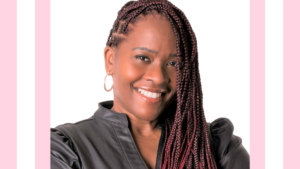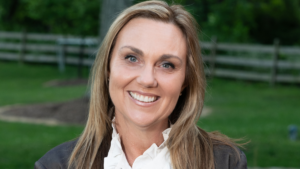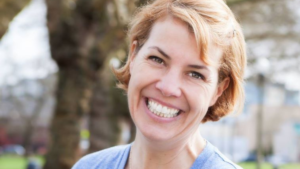Episode 205: Myth Busting: Fall Prevention and Aging with Joy Fletcher

One out of four older adults will fall annually in the United States. If you're thinking, I'm not at risk, my guest today will talk about how age 30 is the new 50 when it comes to preventing falls.
Our foundation at that early age dictates what we can handle as we grow older. Joy Fletcher is a fitness professional with more than three decades of experience. She’s the owner of Agile 4 Life Fitness, which specializes in live, online fitness classes and personal training for seniors. Her latest project is a 12-week group program called Standing Strong, designed to help participants improve strength and balance to prevent devastating falls.
Focus on preventing falls for seniors
Joy is breaking her industry. She is busting the myth that as you age, it's just how it is. You're going to fall. You're not going to be as strong. That's just what it is to age.
She’s taking that on with working to support older people from falling and explaining how people can begin as early as age 30 to prevent them in their later years.
Falling, says Joy, is a multi-pronged problem that starts when we're younger. We now know we begin losing muscle mass and bone density at age 30 – not 50 or 60. This creates a loop where lost muscle strength means you're less stable and more apt to lose your balance.
Other factors affect balance, like how well we can hear. People who wear two hearing aids will have more problems. The same is true with vision issues and diabetes.
Diabetes might lead to neuropathy; the sensation in the bottom of your feet is not as good as it used to be. You can’t feel the earth, you can’t connect to the ground. You might trip over something. Because of muscle weakness, you might have drop foot. That might mean not being able to lift your foot high enough over a step or a rug.
The fear of falling can lead to shuffling – rather than actually walking – which affects our posture and mobility.
“I can guarantee that most of those people had some kind of trip or slip to begin with that really hit them in the heart,” says Joy. “That scared them enough that they were like, ‘OK, I need to compensate or overcompensate now.”
Foundation to prevent falls at 30
Joy says we need to take care of ourselves – 30 minutes daily walking and doing a little weight training. She says people tend to discount yoga and tai chi, but anytime we move the muscles, it will help. Stretching really is strengthening, she says.
When you do yoga, you're still getting stronger. We want weight on the bone; we want weight on the muscles. We want the muscles to move. Those are the things that we're trying to concentrate on.
In our 30s, we're busy. This is our most productive time; work usually blows up, and we feel like we don't have that time. But that's when you really need it the most. 30 minutes a day for doing some fitness will help you in those later years.
Make posture a priority
For those of you sitting between 30 and 70 (hello, me!) Joy says to make sure posture is a priority. One of the easiest ways to practice posture is when you go out for a little walk; think about walking with really good posture. We're actually strengthening the muscles that help keep you in better positioning for your posture.
Hopefully, you are still working out and using some weights now. And the mirrors in the gym aren't just for selfies. The mirrors are there to watch your form. You can be more conscious and pay attention to your body's alignment.
Joy says the biggest secret for your posture is to pull tall in the rib cage. It's not what you do with your shoulders. Keep your hips stable; pretend they weigh three tons. You cannot move them and only pull them tall from the rib cage. That will automatically put your shoulders in a more natural position.
(My favorite tip from Joy is to drop your chin. It will straighten your neck!)
Preventing falls at age 70+
Joys says you can still build quality muscle mass even at age 70, 80, and 90. You can start at any age, and it will still help.
“Why do you think I don't give my dad a break even though he's going to turn 96? And he gives me this look when he's working out,” says Joy. “I have to remind him it's only two more reps. We can do this because it's quality. Every rep we do is going to be quality, and it's going to help him with his strength and his balance.”
Joy acknowledges some senior folks are hesitant to try because they don't know if it will work and there might be a monetary burden. She suggests checking out Silver Sneakers through AARP, which has a lot of free programming.
“A lot of times what happens is people try to do too much too soon, and that's the only thing that you really have to be careful of is when we're older,” says Joy. “We don't recover as quickly when we're older, and I'm here to vouch for that. I can definitely tell you that is true.”
She says it's important to learn the form and the proper technique. Try not to get discouraged; don't rush – it comes gradually. But then, once you have it, you have it. It's like riding a bike. You develop motor control and muscle memory.
Muscle strengthening will help. Even if someone falls and they're older, they're still going to be able to catch themselves better and recover better.
Just because we get older, we don’t have to fall. Joy says there's nothing better than watching someone gain their confidence from taking care of themselves better.
Free gift for listeners
Joy shares the three most important changes you should start today to prevent falls ... as you age.
It's a 20-page infographic that details how to decrease the risk of falling for older adults. There are exercises, pictures, and explanations on how to get started.
Binge More Game On Girlfriend™ Podcast Episodes
Want more in spiration and fun? Subscribe to my channels on:
Something Just for You
Freedom in your business is here. Make revenue that allows you to exhale. Grab my free Freedom Calculator below, and know exactly how much your business needs to make so you can be FREE.




